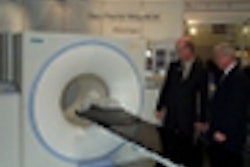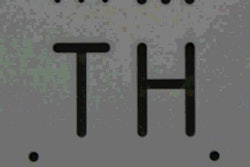TORONTO - A triple-detector hybrid PET system can provide improvements in peripheral imaging over two-detector systems, according to research presented Tuesday at the Society of Nuclear Medicine meeting.
"The third detector should improve hybrid PET performance for peripheral lesions, particularly in large patients," said Curtis Caldwell, Ph.D. of the Sunnybrook and Women's Health Sciences Centre in Toronto. "It does not have a significant effect on the (detection) of midline lesions."
To determine whether the addition of a third detector improved lesion contrast or just degraded spatial resolution, the Sunnybrook research team studied FDG-PET scans of the thorax of ten cancer patients acquired using an IRIX gamma camera with γ -PETAZ system (Marconi Medical Systems, Cleveland, OH). 68GE and 68GA fiducial skin markers were placed on reproducible skin locations during the scans.
The researchers twice reconstructed the image data into transaxial slices. First, the data were reconstructed using data from all three detectors. To then simulate the image generated by a two-detector hybrid PET scanner, the researchers also reconstructed the image data using only the two opposing detectors. Only photomultiplier-photopeak coincidences were accepted, according to the researchers.
The two sets of transaxial images were processed identically and aligned exactly by definition, Campbell said. Measures of signal and background ratio were taken from the three skin markers and three internal areas of uptake per patient. Spatial resolution was also measured.
The third detector added an average of 36% more coincidence detections, the researchers discovered. Twenty-one percent came from inside the body, while 15% were outside the body outline and of no use, he said. The increase in detections was primarily seen near the periphery of the imaged object, he said.
Skin markers showed an average increase in contrast of 6.4%, while internal regions of interest showed an average gain of 3.7%. The researchers did discover a slight degrading of spatial resolution in the areas dominated by third detector counts.
"The coincidences involving the third detector on average may have larger depth of interaction uncertainties due to the angle between the detectors involved," Campbell said. "The resolution decrease is slight and that's just at the very outside region."
By Erik L. RidleyAuntMinnie.com staff writer
June 28, 2001
Click here to post your comments about this story. Please include the headline of the article in your message.
Copyright © 2001 AuntMinnie.com





















